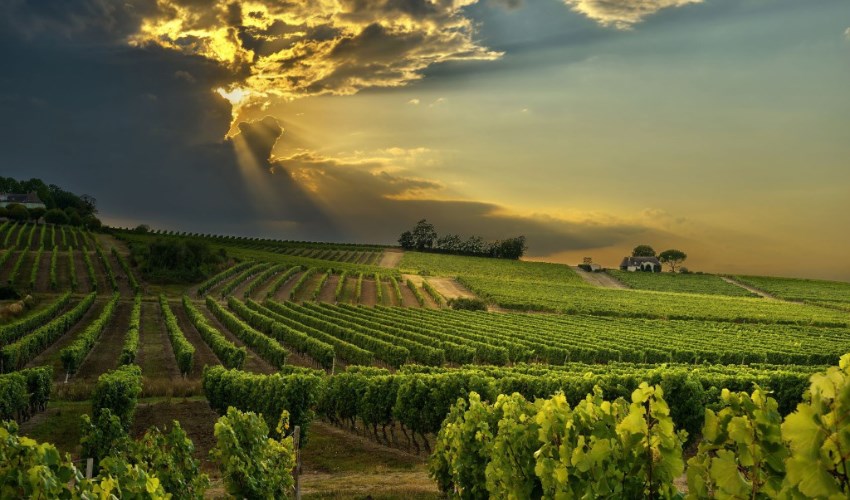
The Winelands are called the "winelands" because of the vineyards and wine. Sometimes we forget that. And Stellenbosch is in the middle of it all. It is for this reason that people pay a premium to live in the Winelands. It also explains why it is one of South Africa’s premier tourist destinations and so prominently featured on all our tourism brochures.
South Africa had 93 656 hectares of wine grapes planted in 2000. In 2021 this has changed to 90 512 ha. When looking more closely at Stellenbosch, the vineyards went from 16 112 ha in 2000 to 14 933 ha in 2021, which is worrying, as it shows that 37% of vineyards pulled out was in the Stellenbosch region.
In 2010, 19.4% of Stellenbosch vines were older than 25 years. In 2021, 39.5% of vines were older than 25 years. This equals 5 898.5 ha of vineyards. Of these, only 958 ha are registered old vineyard vines. This means that there are almost 5 000 ha of vines that didn't age as gracefully as Jane Fonda or Gary Player, and would've had to be replaced already. Only the Northern Cape and Swartland have worse replacement numbers. The key difference is that in these areas at least agricultural land remains agricultural production land with producers just moving away from wine grapes to more profitable crops, while in Stellenbosch old vines are replaced with nothing.
Before we begin with some cigarette box math I first want to put down a disclaimer. As my stats professor once said, “An average is a dangerous thing”. There are in fact some really successful Stellenbosch grape producers that make this whole grape growing thing look easy, but there are many that are seriously suffering. Hopefully, by the end of this article, you will have a bit more insight into why that might be.
Average price of agricultural land in Stellenbosch for the use of viticulture is about R1 million per hectare on the open market. Agricultural land bought for development can sell for up to R5 million per hectare.
The guideline provided by Vinpro for the Stellenbosch region to break even on production costs is R98 000 income per season per hectare. With an average of 7.6-ton yields for the last 10 years for the region and average price of R7 850 per ton of grapes in Stellenbosch in 2022, it gives you an income of R59 660 per hectare. This shows you why so many grape producers in Stellenbosch are struggling.
For long-term viability the profit margin for wine grapes is supposed to be about 20% above production costs. Meaning on a R98 000 even break price, for sustainability you'd need an income of R117 600. To make up the difference between what the land is worth for development vs wine grape agriculture, you'd have to farm that hectare profitably for 204 years. It's now easier to understand why many farmers opt out when given the chance.
If we use current grape prices for Stellenbosch grapes to get the sustainable income from grapes, you would need a yield of 15 tons a hectare. Anything lower than this means you have to start cutting corners somewhere to stay viable. You will now start to see why the 39.5% old vineyards is a number that is making alarm bells go off. Because not only are they not able to produce the required tons to stay profitable for the producer, but it also means that they don't have the capital to replace these vineyards as they have to stem the outflow of capital by using these funds that should go to replacing vineyards.
Another nail in the coffin: When assessing an agricultural enterprise, what a lot of people don't realise is that vineyards at the end of their production life, the 39.5% shown, are written up at a loss when evaluating an agricultural enterprise. That means that at R256 000 average replacement cost per hectare according to Vinpro, Stellenbosch producers are currently sitting on R 1.5 billion in extra unrealized loss – just in old vineyards. This is not even accounting for the loans and debt that many would have been forced to take on. If I was the paper average Stellenbosch grape farmer, I'd be losing R38 340 per hectare per year.
But what will happen when the producers can no longer stay afloat and a lot of the vineyards are ripped out or simply replaced by the ever-sprawling housing developments with their quasi-wine sounding names? Over a braai fire while discussing this issue with other wine industry people we had a cynical colleague suggest that maybe there should be a winelands levy paid to producers from the wine tourism and development community, because, as he put it, “If I was a Stellenbosch restaurant/hotel, I would be much more worried about the state of grape farmers in Stellenbosch.”
So what to do? As always it is an easy answer that in reality is quite a bit harder to put into practice. We have to raise the average price of South African wine so that producers can get more money for their grapes and we have to take into account the hedonic value of the winelands and not merely how much more money we can make from 10 new houses on a hectare of development. There are many organisations and industry bodies that are pushing for the promotion of South African and Stellenbosch wines, like Stellenbosch Wine Routes, WoSA, Old Vine Project, etc. Only time will tell if their efforts pan out and if Stellenbosch will stay the center of the South African wine industry.